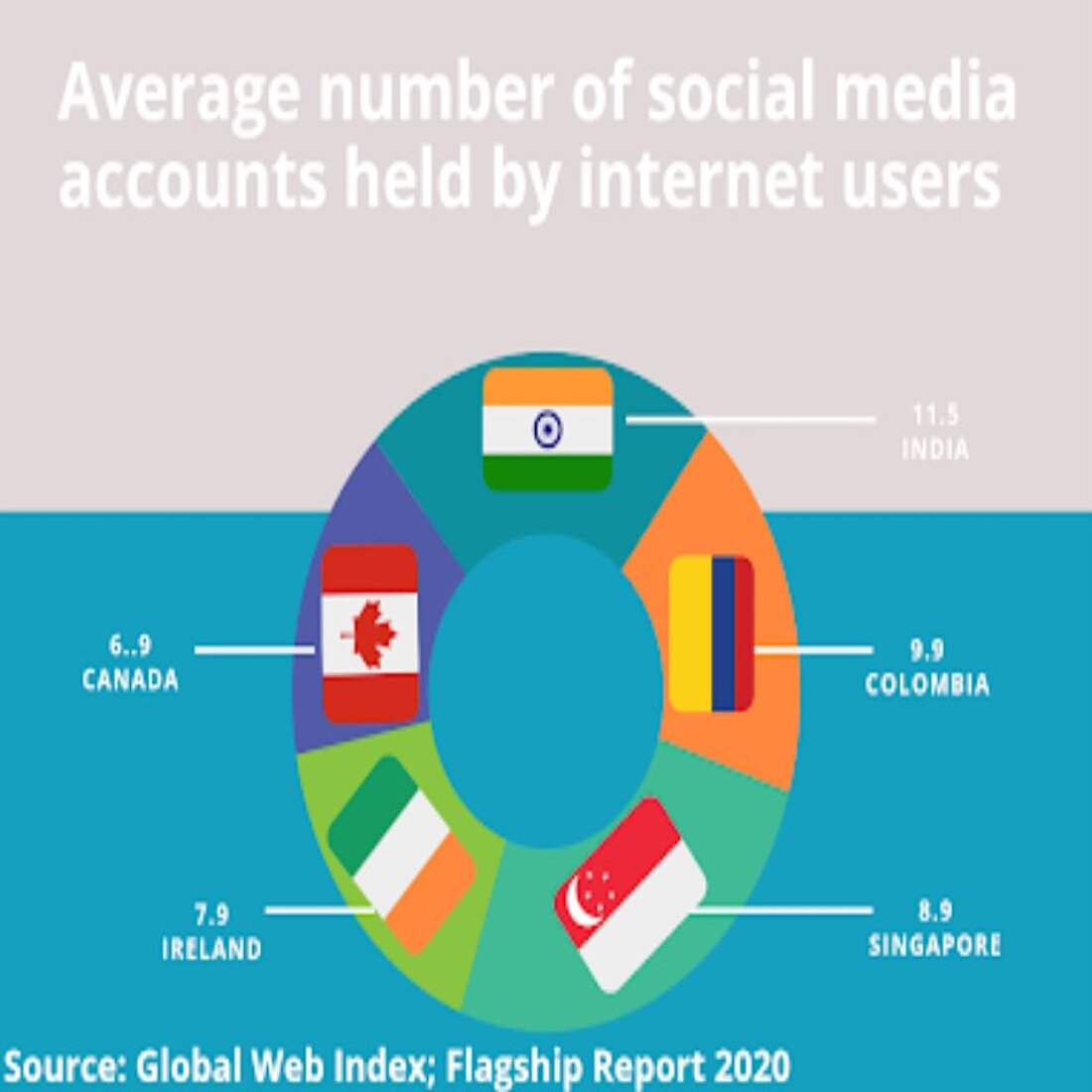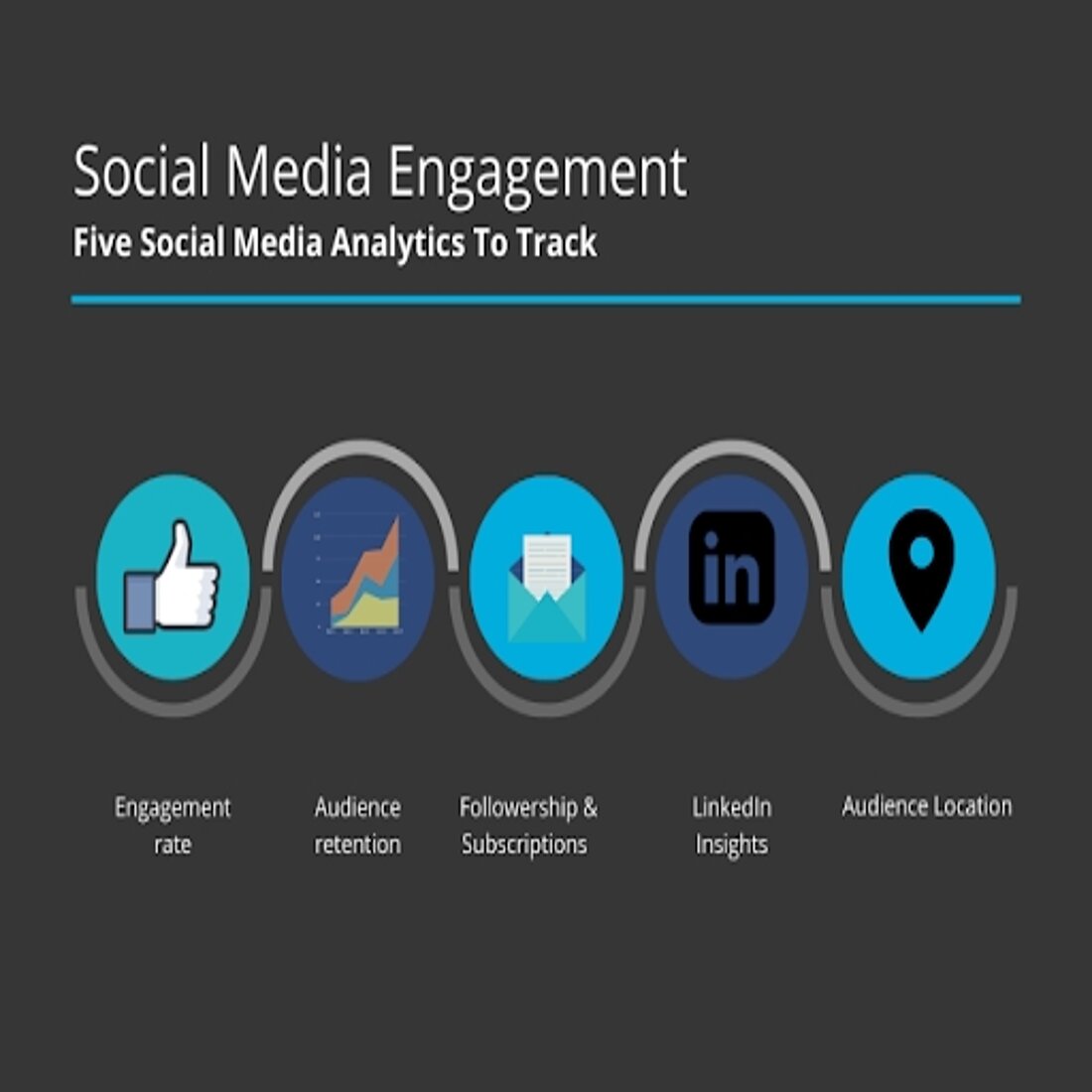- Why Us?
- Features
White Label
For SaaS Platforms & Agencies
Provide our complete analytics suite to your clients, directly within your own interface and with your/their own branding. Discover Analytics-as-a-Service and White Label Analytics. Great benefit, minimal effort.
- Pricing
- White Label
- Success Stories
- Partner
- ResourcesExpand Your Knowledge
9-minute read min
CONTENTS
- Social Media Usage: An Overview
- Most Popular Social Media Platforms
- Importance of Website and Social Media Analytics
- Social Media Analytics Tools You Can Use
- 5 Social Media Analytics You Should Be Tracking and Why
- 1. Engagement Rate
- 2. Audience Retention
- 3. Followership and Subscriptions
- 4. LinkedIn Insights
- 5. Audience Location
- That's Social Media Analytics Explained!
- About the Author
It goes without saying then, that social media will become the melting pot of every and any information under the sun.
One good Facebook ad is enough to change the future of your business - for good or bad.
There's no shortage of successful case studies around, but Airbnb's "Made Possible by Hosts" campaign got 17 million views on social media - numbers that any marketing department would dream of.
Smart marketers and small businesses sharing content know this and so do you - that’s undoubtedly why you’re here.
You want to know how to gain control of this mutating technological creation. Content marketing through social networks doesn’t have to be a drudgery and you can stay on top of an overwhelming amount of data with the right data analytics tools.
Most Popular Social Media Platforms
Firstly let’s highlight—in no particular order—the current top social media platforms :
- YouTube
- Facebook Messenger
- Snapchat
- TikTok
As a small business sharing content to boost your brand awareness, generate leads and also maintain customer success, it is crucial for you to have a working knowledge of your website data insights and social media analytics.
Importance of Website and Social Media Analytics
Firstly, so as to gauge the efficacy of your content productions.
Secondly, to measure the most effective communication channels for your business, e.g. blog posts, text posts, infographics, video marketing, podcasts, etc.
Thirdly, in order to find out what platforms are more productive in terms of engagement and lead generation.
Fourthly, To improve efficiency by streamlining and aligning your social media marketing strategy with the reality of your data analytics. This involves reevaluating the content your small business or marketing team wants to broadcast.
And finally, so as to understand audience behavior.
Now that we’ve outlined the importance of website and social media analytics, let’s talk about some of the tools you can use to gain these insights and also why they are equally important.
1. Engagement Rate
This metric should obviously be at the top of your watchlist.
You need to track how audiences are responding to your social media posts, and also the details of this engagement.
This includes comments, likes, shares, and also clicks - on both photos and links.
Let's now run through these four analytics avenues, and also what they signify:
Comments
You should undoubtedly monitor the manner of engagement on your content. What kind of comments are audiences leaving on your social media posts? Are they questions? And moreover, are these questions related to your business or about something else in your post?
If the latter is the case, that might not be a good sign.
You want the conversations to be related to the content or CTA (Call to Action) of your posts (such as further information on the product you’re selling or why one of the products you’ve advertised is no longer available).
On the other hand, if the questions are related to your call to action (such as where they can get the product), then perhaps your content has not been communicated effectively.
Is your comment section riddled with audiences trading insults with one another or trolling other members of your social media community?
Social media teams should monitor situations like this to ensure that their platforms are not breeding grounds for internet bullies. Are these comments mostly bad feedback about your product or business? Few things damage your brand reputation worse than a thread on how bad your product is.
You can probably imagine how this will negatively influence leads or new visitors to your page.
Comments may also become a negative feedback when instead of praising your product or service, they include recommendations of other businesses! Has your comment section been hijacked by spammers selling other products? You want to monitor this to ensure that your social media marketing strategy is not usurped by others.
Likes and Shares
So they liked the post, but did they then share it?
Liking a post is almost reflexive. Liking seems to say: I’ve seen this post, or Yeah, I kind of agree with this; sharing is a stronger statement of agreement (or disagreement) and endorses (or seeks to rebuke) the message of the post or the engagement within it.
As mundane as these actions may seem, they are a good way of knowing what your audiences think about your content and increasing the reach of your content.
Do you have a good followership but also a relatively small number of likes or shares? It could be as a result of one of these two:
Your content is actually not being seen by your followers; the algorithm is not presenting them before your followers.
Alternatively, your blog post or social media post is uninteresting—possibly because it shares no new information, or it isn’t fun to watch (have you used the right equipment or tools to make sure that your posts are visually compelling?).
If the algorithm is not presenting your ads or posts before the right audience, then you need to reassess your content to ensure that they follow the stipulated guidelines and also are of good quality.
Clicks
Different types of content obviously require different types of engagement.
If most of your social media posts include outbound links, you want to check your social media analytics to see what your audiences are clicking on.
Sometimes your data analytics will show a good engagement rate, but a close look at data analytics might reveal that clicks are few on your link but high on your images.
Making this observation promptly will enable you to craft more engaging content that delivers the right type of engagement. Perhaps you need to reword your headlines to align with the visually compelling image you have used, or perhaps your meta description also needs to be more thrilling.
Either way, you need to be paying attention to your clicks.
2. Audience Retention
So you’ve gotten your audience to click on your video or join your live feed, but somewhere along the line, the data points begin to decline—sometimes gradually, sometimes sharply. Why is your audience not staying through to the end of your video? This is why you should be checking your audience retention. Here are a few questions you need to be asking:
- At what point are they leaving?
- What is making them leave—where is the production flaw?
The purpose of social media marketing—especially on YouTube, Facebook, and Instagram—is moreover to inform audiences about your product or service and also persuade them to follow through on the call to action.
This is where audience retention comes in.
If audiences are leaving before they find out one or two of these things, then it goes without saying that your social media marketing strategy will fail.
Clearly, this will be frustrating and affect workplace productivity. Effective data analytics tools will reveal the data points where you’re losing the audience’s interest and data scientists can tell you what you’re doing wrong. Often, the problem is a production flaw.
Production Flaws Affecting Your Audience Retention
- Poor music
- Impassionate acting
- Ineffective copy—jaded dialogue or monologue
- Poor video quality
3. Followership and Subscriptions
Whether it’s on Facebook, Instagram, YouTube, TikTok, Snapchat or elsewhere, followership is important for the simple reason of reaching more people and improving your brand awareness. The more followers you have, the more credible your business appears to be—for this reason, organizations and individuals buy followers. A growth or decline in your followership should be tracked and analyzed. Here are a few metrics you should be tracking:
- The type of content published, following an increase or decrease in followership/subscription.
- Alternatively, the rate of growth or decline.
Tracking your business’s followership/subscription rate enables you to accomplish your KPIs as you grow your business’s visibility on social media.
4. LinkedIn Insights
If your business is on LinkedIn—and it should be—then you should also study the data analytics of your profile.
Your business’s LinkedIn account positions it before serious, result-oriented individuals and organizations, and once your small business becomes visible as a veritable source of information in your particular field, it will send it a steady stream of potential leads who will interact with your business page.
This interaction is what your small business should be studying; to determine what type of content is necessary to present a credible appearance before visitors, or even select what types of professionals you want to attract into your organization.
You need to upgrade to a premium plan or purchase a good data analytics tool to get this valuable statistical information about how your business is doing.
However, if the free plan is what you can afford, there are useful insights that your business should still track.
These include search stats which show you how many times your business came up in a LinkedIn search.
Again, you can analyze this data to discover when this happened and what type of content you may have published to inspire this.
Optimizing your profile is a good way to be discovered in searches.
5. Audience Location
Knowing your audience’s location is vital to content development and your social media marketing strategy.
This is especially true if you are looking to broaden your reach nationally or internationally.
Facebook ads, for instance, show you where your audiences are and how many people from each location have seen or interacted with your ad. Tracking and analyzing this metric will even reveal locations you never thought of expanding toward.
This insight can serve as a launching pad for your business expansion, as you communicate with audiences from these locations to discover how they would prefer to be served.
As you analyze your big data to figure out what locations are becoming more aware of your business and products, you can develop content that will specifically interest them. This will give you a deeper understanding of your target audience and how best to modify your product to make it accessible to them.
That's Social Media Analytics Explained!
In a nutshell, you should pay attention to these five social media analytics:
- Engagement rate
- Audience retention
- Followership and Subscriptions
- LinkedIn Insights
- Audience Location
Staying on top of your social media analytics is critical to achieving your communication KPIs and executing your social media strategy (this article will guide you on how to develop a successful social media strategy). You may track these metrics yourself or hire a competent data scientist to do so on your behalf. However, make sure you hire a specialist that corresponds to your company culture, as whether they have the enneagram personality type 8 or or 9 will affect how they interact with your team and contribute to the company culture.
Share article
Get Started for Free
Gain World-Class Insights & Offer Innovative Privacy & Security

You might also like
Top 12 Session Replay Tools to Improve User Experience 16 October 2020 - by Simon Coulthard
16 October 2020 - by Simon Coulthard
Website Heatmap Infographic: Everything You Need to Know 28 May 2020 - by Editorial Staff
28 May 2020 - by Editorial Staff














Social Media Analytics: 5 Metrics You Should Be Tracking and Why
Social media analytics is undoubtedly a potent force.
For when used properly, it's a highly effective way to increase engagement, clicks and also conversions that you bring in from your social media platforms.
However, how does it work?
This blog will answer all your questions. In it, you'll learn why social media marketing is so important. It will then look at the different social media analytics tools that you can choose from, before also running through the top social media metrics to follow.
So without further ado, let's slide in.